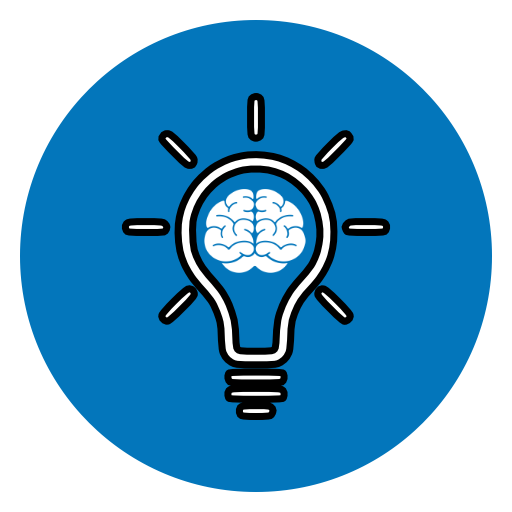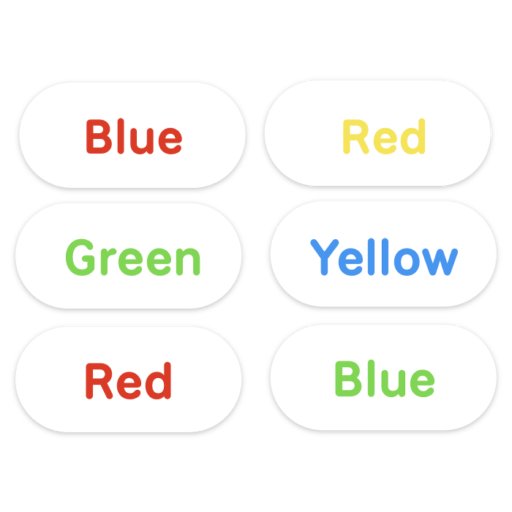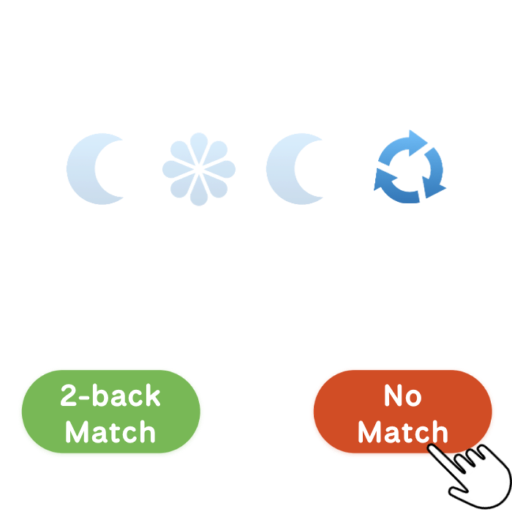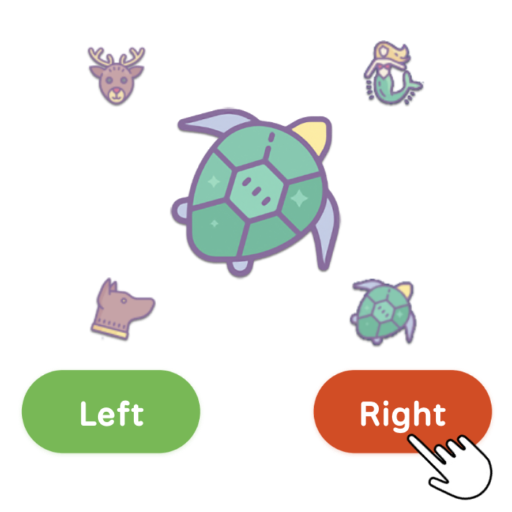CoDo
Train

CoDo Cognitive Training
Matia Labs employs a science-based approach in CoDo to maintaining cognitive ability with four core memory and perception tasks that are simple but powerful. As you might expect from a company with a PhD research scientist as CEO, each activity is based on the latest neuroscience trends, and carefully crafted to address a specific aspect of cognitive function.
Let’s take a closer look at the individual tasks:

Useful Field of View
The first task we’d like to introduce focusses on strengthening your peripheral view, which declines as we get older. Maintaining a healthy peripheral view range is linked with better mobility, improved driving safety and general health. Here’s how it works:
Two images will appear on the screen, one in the center and one off to the side. Your job is to indicate as quickly as possible whether the two images were the same or different by tapping the appropriate button..
At first, the two images will be displayed close together. Over time the second image will move further away and appear for shorter intervals, so you’ll need to concentrate to keep up!
Selective Attention
Selective attention here refers to our ability to focus on certain things while disregarding others. In this task, you will see a series of words that describe colors. The catch is that the words themselves are printed in color, sometimes in the same color as the written word, and sometimes in a different color. Your job is to identify as soon as possible whether the two are the same or different.
Generally, research has shown that it takes the brain longer to process cases where the written word and the color it represents are different, but as with all things related to the human brain, with practice it has been shown to be possible to improve these reaction times, and give a brains a healthy workout in the process.


Short Term Memory
This task often seems daunting at first, but don’t despair, you’ll soon find your groove!
It goes like this: a long string of images will appear, one after the other, in short succession. Most of the time the images will not repeat within a given span of time. From time to time, however, an image will repeat at a distance of exactly two steps back in the series. In other words: an image is shown, followed a different image. Then, the first one appears again. When you see this happen, tap the green button. On the other hand, if you feel that the current image is different than the one that appeared two steps back, tap the red button.
In order to be able to recognize these repetitions you will need to keep at least the previous two images in your short term memory, this task is often referred to in the cognitive science literature as a two-back task.
Divided Attention
In the divided attention task, you will see five images; one in the center and one in each corner. The one in the center is called the key image, and the corners represent locations where the key image may reappear in the following turn. The game works like this: first, a certain key image will appear briefly in the center of the display. Then that image will disappear and reappear in one of the corners on either the left side or the right side of the display. As soon as it jumps to a corner, tap a button to indicate whether it is now on the left side or the right side.
The catch is that while you are busy deciding which side the previous image has moved to, a new key image is already being displayed in the center. Because you are being requested to simultaneously locate the previous image while memorizing a new one, this type of task is often called a divided attention task, and aims to strengthen your multi-tasking skills, as well as your spatial awareness.
